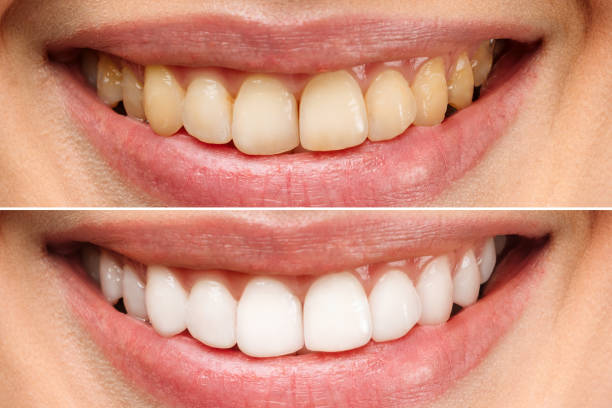Professional Teeth Whitening
Achieve a brighter, more confident smile with our advanced whitening treatments
Safe Treatment
Clinically proven whitening system
Professional Care
Expert dental supervision
Visible Results
Immediate improvement
Long-lasting
Durable whitening effect
Professional Teeth Whitening
Our professional teeth whitening treatment offers a safe and effective way to enhance your smile. Using advanced whitening technology, we can help you achieve noticeably whiter teeth in just one session.
Unlike over-the-counter products, our professional-grade whitening system provides superior results while protecting your teeth and gums throughout the process.

Benefits & Ideal Candidates
Benefits
- Immediate visible results
See dramatic improvement in just one session
- Professional supervision
Expert care throughout the treatment
- Safe and comfortable
Clinically proven methods with minimal sensitivity
- Long-lasting results
Maintain your bright smile for years
Ideal For
- Stained or discolored teeth
From coffee, tea, wine, or aging
- Special occasions
Weddings, interviews, or important events
- Confidence boost
Enhance your self-esteem with a brighter smile
- Professional appearance
Make a great first impression
The Whitening Process
Initial Consultation
Assessment of your teeth's current shade and discussion of your desired results.
Preparation
Professional cleaning and protection of gums and soft tissues.
Treatment
Application of professional-grade whitening gel and activation with special light.
Results & Aftercare
Immediate visible results and instructions for maintaining your brighter smile.
Maintaining Your White Smile
Do's
- Maintain good oral hygiene
Brush twice daily and floss regularly
- Use whitening toothpaste
Help maintain your bright smile
- Regular dental check-ups
Professional cleanings every 6 months
- Drink water after staining beverages
Rinse away potential stains
Avoid
- Excessive coffee and tea
Limit consumption or use a straw
- Tobacco products
Smoking and chewing tobacco cause stains
- Red wine and dark sodas
These beverages can stain teeth
- Highly pigmented foods
Berries, curry, and tomato sauce
Why Choose Professional Whitening?
Superior Results
Professional-grade whitening agents provide dramatically better results than over-the-counter products.
Safe & Controlled
Professional supervision ensures your safety and comfort throughout the whitening process.
Customized Treatment
Personalized treatment plans based on your specific needs and desired level of whitening.
Ready for a Brighter Smile?
Contact us today to schedule your whitening consultation